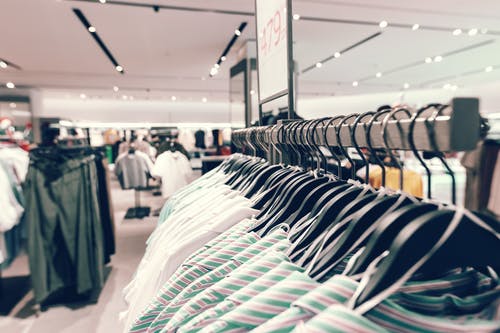Fashion News
A Lady’s Purse: An Unexpected Time Capsule
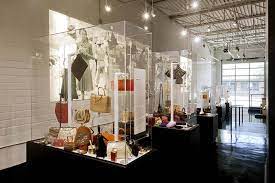
When Anita Davis began collecting purses in her early 20s, she never would have dreamed she’d have one of the world’s biggest collections one day … and one of only three purse museums in the world. Anita’s mother was a bit of a fashionista in their tiny Arkansas town, and she taught Anita a lot about fashion in the ’50s and ’60s as they would shop surrounding towns. “It was a fun and interesting time for fashion. Women could finally wear pants and shoulder bags were popular,” Anita recalls. “The first purse I bought was at a little antique shop in the ’70s in the first real town I ever lived in. It was a late 1800s summer cotton plantation purse. It really caught my attention.” Fast forward to the late ’80s, Anita was newly divorced living in South Arkansas with her two daughters. She began to think a lot about women’s collective experiences throughout time.
Their struggles and triumphs. The things said and the things privately carried. “My daughters were vagabonds, so when they moved to different places, I would visit and go to flea markets. The purses just kept popping up,” Anita says. She had also joined a Carl Jung-oriented group in Little Rock and started learning about The Feminine. Carl believed in a collective unconscious : a collection of thoughts and imagery that everyone is born with and shares due to ancestral experience, whether we realize it or not (source). “In a collective sense, women have taken a back seat to men. These purses kept finding me. I decided this was a wonderful way to honor women,” Anita explains. As her collection grew, so did her knowledge of what the owner would have carried with her during that time. “One time, one of my daughters came home and couldn’t” t find her bed because there were so many purses on it!” Anita says through a laugh. SHARING HER COLLECTION WITH THE WORLD
In 2006, Anita and a group of curators embarked on a traveling exhibit — The Purse and the Person: A Century of Women’s Purses — across the country, stopping in cities like Dallas, Kansas City, Pasadena, Sacramento and Seattle. As the public’s interest picked up steam, so did the idea for a permanent home. Upon visits to Washington D.C.’s museums, Anita realized how seldom women are celebrated, still depicted as the hostess or the homemaker, their dishes on display. “There was an opening for a structure that was built to honor women,” Anita says.
She believed that Little Rock was the perfect purse for her idea and bought an old 1947-constructed building in an overlooked neighborhood she aimed to revitalize. “I called it the feminine part of Little Rock in that not many people wanted to invest in it. I nurtured it, and it felt like the right place,” Anita adds. Since its opening in July 2013, the ESSE Purse Museum & Shop has garnered a fandom of wide-eyed tourists, artists, historians and collectors from all over the world. Locals are realizing, too, what a treasure the museum is.
DATING THE PURSE
“It’s a hard sell. Is it a purse museum or a women’s history museum? We are trying to build on that question,” Anita says. Attention to historical detail runs deeply throughout the entire process. From the early 1900s, a purse would have a label or a brand name. Anita and her team become sleuths, anthropologists, and curators at once. The bag’s materials, colors, lining, even down to the typeface — uncover something about the era of the purse. Anita does not prefer combing estate sales, but rather the places with the highest potential of finding an older purse with all of the contents still intact. The bags she scores at flea markets have already been emptied, but she visualizes what would have been in them, and collects those things to build the story from the inside out. Let’s peek inside some Anita contacted a criminologist in the ’90s when she first started seriously collecting and learned that you can solve a crime if you can get the woman’s purse. “A woman’s purse holds who she is,” Anita says. The name ESSE comes from the Latin infinitive for “to be,” which embodies the idea that a purse is not just a utilitarian container for a woman’s necessities, it is an extension of her personal space, her essence and what makes her unique. The contents of a woman’s purse link to modes of transportation, like coins, tickets, and timetables. Some link to the wars, such as union labels, letters from loved ones, or scribbled down deployment addresses. Many items link to the woman’s family, like toys to entertain the child while the mother shops for groceries or household items. And almost every artifact inside links to the woman’s view of herself and her position in society.
Makeup would not have been carried until the 1920s in America as a woman’s appearance became more and more important in the public sphere. “Before the ’20s, you might have found some smelling salts that helped women wearing corsets breathe,” Anita interestingly adds. Not until the Roaring ’20s was it acceptable to smoke outside the home, so from the ’20s on, women carried tobacco paraphernalia and even flasks These two bags from the ’50s show the post-war prosperity and the baby boom’s renewed emphasis on female domesticity and motherhood. The spilled purse is one Steven Otis’ (an ESSE art director) signature displays. “Whatever the style and price point of a 1950s handbag, a look inside reflects the feminine sensibility of the decade: makeup shared space with trading stamps , coupons, a notepad and pencil, an address book, keys to the station wagon, cash, checks, cigarettes, a lady’s handkerchief, and candy and toys for the kids,” writes ESSE Copywriter Laura Hardy. WHEN AN INTACT BAG SHOWED UP
One day, a man showed up at a nearby restaurant and told the staff to give a purse he had found to the museum, having heard of what Anita was building. He had been cleaning out a late relative’s home and found a handbag untouched since likely the 1930s. “You can tell it had just been sitting in the back of a closet,” Anita says. “It had old cat hair all over it. There were little perfume vials that women used to break open to use the perfume.” This donation was a beautiful depiction of this woman’s little universe. “You just knew that she was a church lady. She was going to carry the purse in one hand while she clung tightly to her little boy with the other. The toys were there to keep him quiet,” Anita tells me through a tinge of nostalgia and wonderment
AN EVER-EVOLVING MUSEUM
In addition to depicting 10 decades of the American woman, Anita and her team aim to contribute to the powerful conversations on gender and race that are getting louder by the day. “We have incorporated Black women in our show ever since we started. We are always aware of the hierarchy of whence people came. It shows our history,” Anita says. Though ESSE focuses on 20th-century handbags, you can also find sub-exhibits and special collections of swimwear, shoes, hats, and Barbies.
HAVE AN ESSE PURSE OF YOUR OWN
One of the neatest aspects of ESSE is its delightful museum store (shoppable ONLINE!) filled with high-quality and highly unusual handbags as well as eclectic jewelry, scarves, books, and other items — many handcrafted by local, national and international artisans. Purses range from leather, wood, felt and other fabrics to rubber and recycled materials. With prices ranging from $5 to $1,000, the store offers something for everyone and aligns with Anita’s beliefs in fair trade, sustainability and anti-fast fashion
While she isn’t nearly as active seeking as she once was, Anita still collects purses. “I won’t ever lose my lust for finding. I was a hunter-gatherer in another life,” she says. At the end of our conversation, I asked Anita what purse she carries. “I was trendy in the ’60s and carried vintage bags in the ’80s. Then I think I carried the same purse for 10 years!” That truly encompasses this culture pioneer’s view of the bag as perhaps the most personal and important appendage to the woman. ESSE’s goal is to celebrate women as a collective but also individually. “This place honors your mother and your aunt and all the women that are important to you,” Anita says
Fashion News
UNO: Revolutionizing Nail Care

UNO stands as a pioneering force, reshaping the landscape of nail care by transcending conventional boundaries. Beyond merely offering a product line, UNO represents a paradigm shift in the industry’s approach to nail health and aesthetics. It champions innovation, quality, and boundless creativity, catering to both the meticulous needs of nail technicians and the discerning preferences of clients.
Starting with the foundational strength provided by UNO Base Coat, each product in the range is meticulously crafted to deliver exceptional results. The culmination of this journey is the exquisite finish achieved with UNO Lux Rubber Base, an embodiment of elegance and sophistication.
UNO Lux Rubber Base: Redefining Elegance and Artistry
UNO Lux Rubber Base stands as the epitome of refinement, ushering enthusiasts and professionals alike into a realm of unparalleled artistry. Its premium formula doesn’t merely adorn nails; it bestows a lavish finish that mesmerizes the senses. The versatility it offers extends beyond the conventional, enabling the creation of captivating effects that elevate nail aesthetics to an art form.
This remarkable product isn’t just a tool; it’s an enabler of creativity. Empowering nail technicians to transcend conventional limitations, UNO Lux Base catalyzes pushing boundaries and unleashing boundless imagination. It serves as a canvas for masterpieces, enabling technicians to craft designs that leave an indelible mark and resonate long after.
Discover Limitless Potential with the Perfect Platform
Embrace the infinite possibilities offered through our expansive platform. As a cornerstone in the nail industry, UNO doesn’t just provide products; it curates an entire ecosystem of innovation. Our array of products and manicure tools are unparalleled and designed to equip every nail professional with the means to excel.
From avant-garde tools engineered for precision to trendsetting techniques and resources, our platform serves as a treasure trove, nurturing skill enhancement and fostering a culture of continual growth. Your journey in the nail service industry reaches new horizons with UNO. Visit https://www.kodiprofessional.com/ and immerse yourself in a world where excellence is the norm.
Fashion News
Unlocking the Art of Creating Best Magazine Covers
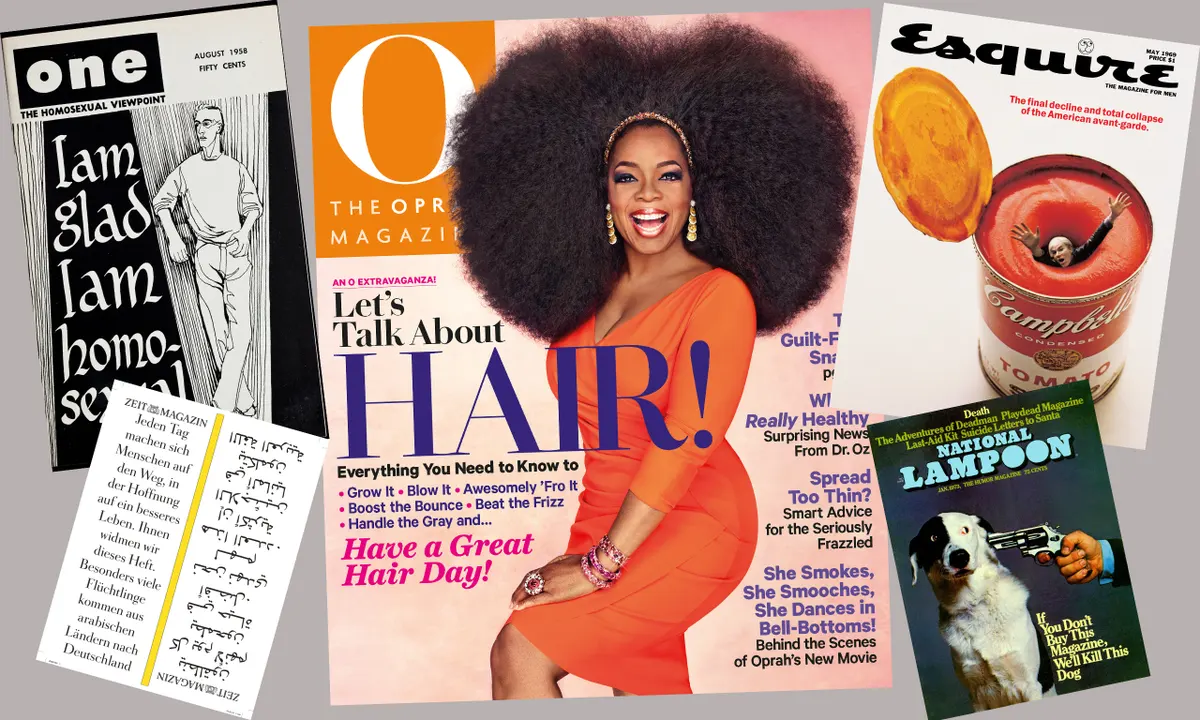
Learn the secrets to designing captivating magazine covers that grab readers’ attention instantly. Discover the elements that make up the best magazine covers and how to craft your own masterpieces.
Introduction:
In the world of print media, a magazine’s cover is its first impression – the enticing gateway to the captivating content within. Crafting the best magazine covers is both an art and a science, requiring a deep understanding of design principles, visual storytelling, and audience psychology. In this comprehensive guide, we will explore the key components that contribute to the creation of eye-catching magazine covers. From typography to imagery, color schemes to layout, we will dissect each element, providing you with the tools you need to craft your own iconic magazine covers. Let’s embark on this creative journey together.
Table of Contents:
| Table of Contents |
|---|
| 1. Typography and Its Impact on Covers |
| 2. The Power of Visual Imagery |
| 3. Choosing the Perfect Color Palette |
| 4. Layout Matters: Balance and Composition |
| 5. Understanding Your Target Audience |
| 6. Nailing the Headline: A Guide to Effective Titles |
| 7. Incorporating Trends: Staying Fresh and Relevant |
| 8. Branding Your Magazine: Consistency is Key |
| 9. Case Studies: Examining Successful Magazine Covers |
| 10. Designing for Digital: E-Covers for the Modern Age |
Now, let’s dive into each topic to uncover the secrets of crafting the best magazine covers.
Typography and Its Impact on Covers:
Effective typography can make or break a magazine cover. Discover how to choose fonts that resonate with your audience and convey your magazine’s personality.
The Power of Visual Imagery:
Images are the soul of magazine covers. Learn how to select, edit, and position images for maximum impact.
Choosing the Perfect Color Palette:

Color sets the mood and tone of your magazine. Explore how to select the right color scheme to evoke the desired emotions.
Layout Matters: Balance and Composition:
A well-structured layout is crucial. Explore the principles of balance and composition to create visually pleasing covers.
Understanding Your Target Audience:
Know your readers inside out. Tailor your covers to cater to their preferences and interests.
Nailing the Headline: A Guide to Effective Titles:
Craft compelling headlines that pique curiosity and encourage readers to delve into your magazine.
Incorporating Trends: Staying Fresh and Relevant:
Stay ahead of the curve by incorporating design trends into your covers while maintaining your brand’s identity.
Branding Your Magazine: Consistency is Key:
Consistency builds trust. Learn how to maintain a cohesive look across all your magazine covers.
Case Studies: Examining Successful Magazine Covers:
Analyze real-world examples of magazine covers that have achieved exceptional results.
Designing for Digital: E-Covers for the Modern Age:
Explore the nuances of designing digital magazine covers for an online audience.
Frequently Asked Questions:
1. What makes a magazine cover stand out? A standout magazine cover typically features a captivating image, compelling headline, and a well-balanced layout.
2. How can I choose the right colors for my magazine cover? Consider your target audience and the emotions you want to evoke. Research color psychology to make informed choices.
3. Is typography really important for a magazine cover? Absolutely. Typography plays a significant role in conveying your magazine’s tone and personality.
4. Can I experiment with different cover styles and still maintain my brand identity? Yes, but ensure there’s a consistent element that ties all your covers together, such as a logo or color scheme.
5. How often should I update my magazine’s cover design? It depends on your magazine’s frequency and your audience. Periodically refreshing the design can keep your publication looking fresh.
Certainly! While opinions on the “best” magazine covers may vary, here are some iconic magazine covers that have left a lasting impact on popular culture:
- National Geographic – “Afghan Girl” (June 1985): The haunting image of Sharbat Gula’s piercing green eyes on the cover has become an iconic representation of the magazine’s powerful photography.
- Vogue – Various Covers: Vogue magazine has produced numerous stunning covers over the years, featuring celebrities, models, and cultural icons that set trends and influence fashion.
- Rolling Stone – “John Lennon and Yoko Ono” (January 1981): This cover, featuring a naked John Lennon curled up beside Yoko Ono, captured attention and controversy, reflecting the couple’s vulnerability and their strong bond.
- TIME – Various “Person of the Year” Covers: Each year, TIME magazine features a “Person of the Year” cover that highlights influential figures who have had a significant impact on the world.
- Esquire – “Andy Warhol” (May 1969): This cover, featuring a screen-printed portrait of Andy Warhol’s face, showcased the artist’s pop art style and irreverent personality.
- The New Yorker – “9/11 Tribute” (September 2001): After the September 11 attacks, The New Yorker’s cover depicted a somber and simple image of the World Trade Center towers, capturing the mood of the nation.
- Sports Illustrated – Various Swimsuit Issue Covers: The annual Swimsuit Issue features iconic covers that celebrate beauty and athleticism.
- Playboy – Various Covers: Playboy’s covers, featuring iconic bunny logo and featuring prominent figures, have often been both provocative and influential.
- The Economist – Various Covers: The magazine’s thought-provoking covers use clever visuals and symbolism to highlight global issues and trends.
- Wired – Various Futuristic Covers: Wired magazine often features futuristic and tech-themed covers that reflect the cutting-edge topics they cover.
- conclusion
Remember that the “best” magazine covers can be highly subjective and depend on personal preferences and cultural context. These examples have left a mark in their respective genres and eras, but there are many more out there worth exploring.
Fashion News
Unlocking Elegance: Blazer Dress Outfits for Every Occasion
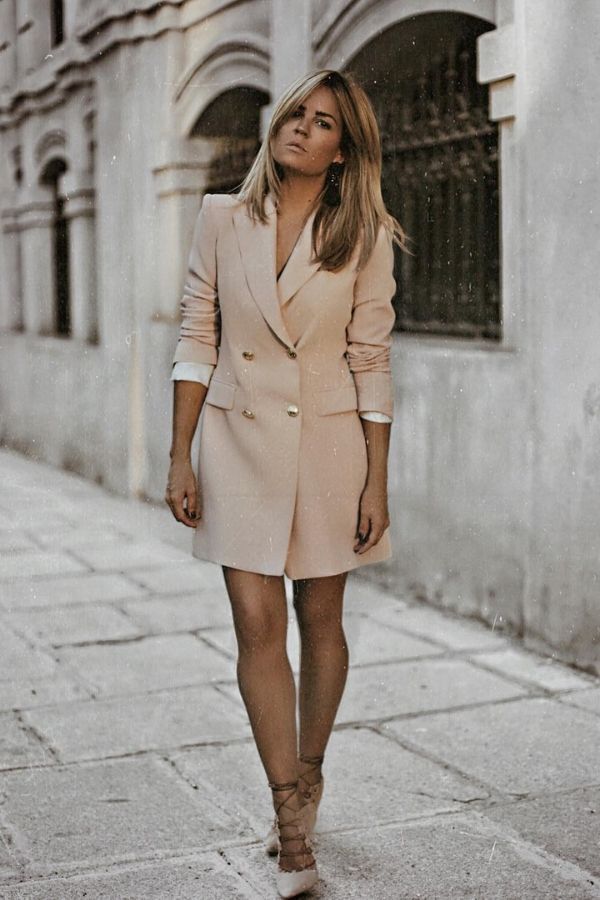
Discover the versatility of blazer dress outfits. Whether you’re aiming for casual chic or professional elegance, blazer dresses offer a stylish edge. Explore various styles, pairing suggestions, and FAQs.
Introduction
In the world of fashion, innovation is a constant Blazer Dress Outfits companion, reshaping and redefining trends. Among these trends, the blazer dress has emerged as a true fashion chameleon, seamlessly blending classic sophistication with contemporary flair. From power lunches to evenings out, blazer dresses offer a unique ensemble choice that exudes confidence and style. In this article, we delve into the realm of blazer dress outfits, offering insights, inspirations, and answers to your burning questions.
Table of Contents
| Table of Content | |
|---|---|
| 1. Casual Chic | 5. Pairing Tips |
| 2. Formal Glam | 6. Fabrics |
| 3. Prints & Patterns | 7. Shoes |
| 4. Styling Hacks | 8. Accessories |
Casual Chic

Blazer dresses have taken the fashion world by storm, effortlessly bridging the gap between casual and chic. The beauty of a blazer dress lies in its simplicity; it’s a one-piece wonder that can be easily dressed up or down. To achieve a casual yet refined look, opt for neutral tones or soft pastels. Pair your blazer dress with sneakers or ankle boots for a relaxed yet trendy appearance.
Formal Glam
When the occasion demands a touch of elegance, a blazer dress can rise to the challenge. Choose a blazer dress in a rich, deep color like navy, burgundy, or black. Tailored to perfection, these dresses exude sophistication. Enhance the glamour with statement jewelry, sleek heels, and a clutch. You’ll command attention at any formal event.
Prints & Patterns

For those with a Blazer Dress Outfits penchant for the bold and the vibrant, blazer dresses offer an enticing canvas for prints and patterns. Whether it’s floral, animal, or geometric designs, a patterned blazer dress can become the centerpiece of your ensemble. Remember to keep accessories minimal to let the pattern shine.
Styling Hacks
Blazer dresses open up Blazer Dress Outfits a realm of creative styling possibilities. Use a belt to cinch the waist and create an hourglass silhouette. Layer with turtlenecks or crisp shirts for a preppy twist. Experiment with different blazer lengths, from thigh-skimming to knee-length, to find the style that flatters your body type.
Pairing Tips
Choosing the right shoes and accessories can elevate your blazer dress outfit. For a playful daytime look, opt for white sneakers and a crossbody bag. Transition to evening by swapping sneakers for strappy Blazer Dress Outfits heels and adding statement earrings. Remember, balance is key – let one element stand out while keeping the rest understated.
Fabrics
Blazer dresses come in a variety of fabrics, each with its unique charm. For a polished look, opt for wool or tweed. Lighter fabrics like linen or cotton can lend a breezy feel to your outfit. Consider the season and the occasion when selecting the fabric of your blazer dress.
Shoes
The right pair of shoes can make or break a blazer dress ensemble Blazer Dress Outfits . Classic pumps exude elegance, while ankle boots add a touch of edge. Sandals are perfect for a summery vibe, while mules provide comfort and style. Let the overall tone of your outfit guide your choice of footwear.
Accessories
Accessories are the finishing touches that bring your blazer dress outfit to life. A sleek belt can define your waist, while a statement necklace draws attention to your neckline. Don’t underestimate the power of a well-chosen handbag – it can tie your entire look together.
FAQs
1. Can blazer dresses be worn casually? Absolutely! Blazer dresses can be dressed down with sneakers or ankle boots for a casual yet stylish look.
2. Are blazer dresses suitable for formal events? Definitely. A well-tailored blazer dress in a rich color, paired with statement jewelry and heels, is perfect for formal occasions.
3. How can I style a patterned blazer dress? Keep accessories minimal and let the pattern take center stage. Opt for simple shoes and understated jewelry.
4. What body types do blazer dresses flatter? Blazer dresses are versatile and can flatter a range of body types. Experiment with different lengths and accessories to find your perfect style.
5. Can I layer a blazer dress with other clothing items? Yes, blazer dresses can be layered with turtlenecks, shirts, or even pants for a unique and stylish ensemble.
6. Which fabrics are suitable for different seasons? Wool and tweed are great for colder months, while linen and cotton are ideal for warmer weather.
7. What shoes should I wear with a blazer dress? The choice of shoes depends on the overall look you want to achieve. Pumps for elegance, ankle boots for edge, and sandals Blazer Dress Outfits for a summery feel.
8. How do accessories enhance a blazer dress outfit? Accessories like belts, necklaces, and handbags add detail and cohesion to your ensemble, elevating its overall appeal.
Conclusion
Blazer dresses have rightfully claimed their spot as a must-have item in any fashion-forward individual’s wardrobe. From casual days to formal nights, blazer dresses offer endless opportunities for creative styling. By mastering the art of pairing, experimenting with fabrics, and embracing unique accessories, you can curate Blazer Dress Outfits looks that effortlessly reflect your personality and style. So, whether you’re attending a business meeting or enjoying a night out with friends, consider a blazer dress to make a bold and timeless fashion statement. Your journey into blazer dress fashion has only just begun Blazer Dress Outfits , and the possibilities are as limitless as your imagination.
-

 Entertainment1 year ago
Entertainment1 year agoAdmiral casino biz login
-

 Entertainment2 years ago
Entertainment2 years agoHow Much Does The Rock Weigh
-

 Entertainment2 years ago
Entertainment2 years agoDownload Popular Latest Mp3 Ringtones for android and IOS mobiles
-

 Entertainment2 years ago
Entertainment2 years agoTop 10 Apps Like MediaBox HD for Android and iPhone
-
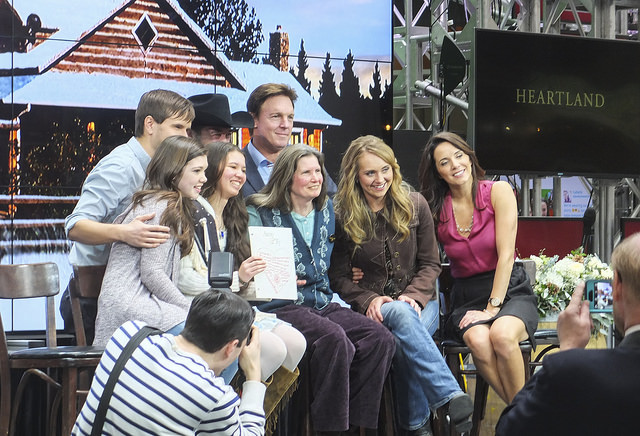
 LIFESTYLE2 years ago
LIFESTYLE2 years agoWhose Heartland?: The politics of place in a rural–urban interface
-

 Fashion3 years ago
Fashion3 years agoHow fashion rules the world
-

 Fashion Youth2 years ago
Fashion Youth2 years agoHow To Choose the Perfect Necklace for Her
-

 Fashion Today2 years ago
Fashion Today2 years agoDifferent Types Of lady purse


